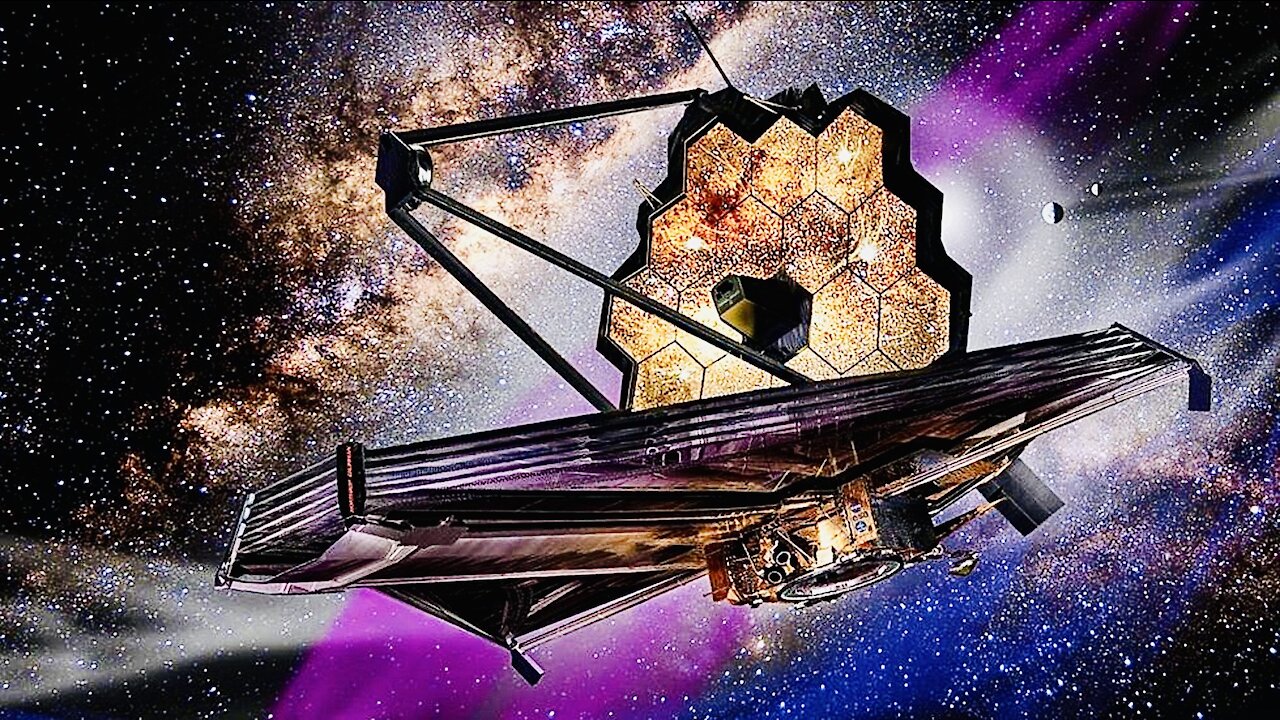Premium Only Content

NASA's New Super Telescope - 100 Times More Powerful Than Hubble
Music: Flying Dream by Dhruva Aliman - Amazon- https://amzn.to/2B9tGa7 - https://music.apple.com/us/artist/dhruva-aliman/363563637 - https://dhruvaaliman.bandcamp.com/album/road-of-fortunes
http://www.dhruvaaliman.com/ - Spotify - https://open.spotify.com/artist/5XiFCr9iBKE6Cupltgnlet …The James Webb Space Telescope (sometimes called JWST or Webb) will be a large infrared telescope with a 6.5-meter primary mirror. The telescope will be launched on an Ariane 5 rocket from French Guiana in October of 2018. JWST will be the premier observatory of the next decade, serving thousands of astronomers worldwide. It will study every phase in the history of our Universe, ranging from the first luminous glows after the Big Bang, to the formation of solar systems capable of supporting life on planets like Earth, to the evolution of our own Solar System.
Orbiting through space nearly a million miles from Earth, the Webb telescope will open up new expanses of the near and distant universe to our view.
Webb's infrared-detecting gaze will penetrate clouds of dust within our own galaxy to reveal previously hidden secrets, and reach back in space and time to view the very edge of the cosmos.
Webb will monitor the weather and atmospheres of the giant planets and study the composition of smaller objects in our solar system.
Webb will search for signs of life-sustaining water on planets beyond our solar system, and help us learn how planets form.
Webb will see through dust-cloaked regions impenetrable to visible light, revealing the birth of stars and swirling material around black holes.
Webb will see the first, tiniest galaxies of the cosmos, and witness their evolution into vast islands of stars.
The epoch of galaxy formation is currently completely hidden from our view, and we haven’t yet observed how galaxies formed or when. We have a lot to learn about how galaxies got supermassive black holes in their centers, and we don't really know whether the black holes caused the galaxies to form or vice versa. We can't see inside dust clouds with high resolution, where stars and planets are being born nearby, but JWST will be able to do just that. We don't know how many planetary systems might be hospitable to life, but JWST could tell whether some Earth-like planets have enough water to have oceans. We don't know much about dark matter or dark energy, but we are expecting to learn more about where the dark matter is now, and we hope to learn the history of the acceleration of the universe that we attribute to dark energy. And then, there are the surprises we can't imagine!
By viewing the universe at infrared wavelengths JWST will show us things never before seen by any other telescope. It is only at infrared wavelengths that we can see the first stars and galaxies forming after the Big Bang. And it is with infrared light that we can see stars and planetary systems forming inside clouds of dust that are opaque to visible light.
The primary goals of JWST are to study galaxy, star and planet formation in the universe. To see the very first stars and galaxies that formed in the early universe, we have to look deep into space to look back in time (because it takes light time to travel from there to here, the farther out we look, the further we look back in time).
The universe is expanding, and therefore the farther we look, the faster objects are moving away from us, redshifting the light. Redshift means that light that is emitted as ultraviolet or visible light is shifted more and more to redder wavelengths, into the near- and mid-infrared part of the electromagnetic spectrum for very high redshifts. Therefore, to study the earliest star and galaxy formation in the universe, we have to observe infrared light and use a telescope and instruments optimized for this light.
Star and planet formation in the local universe takes place in the centers of dense, dusty clouds, obscured from our eyes at normal visible wavelengths. Near-infrared light, with its longer wavelength, is less hindered by the small dust particles, allowing near-infrared light to escape from the dust clouds. By observing the emitted near-infrared light we can penetrate the dust and see the processes leading to star and planet formation.
Objects of about Earth's temperature emit most of their radiation at mid-infrared wavelengths. These temperatures are also found in dusty regions forming stars and planets, so with mid-infrared radiation we can see the glow of the star and planet formation taking place. An infrared-optimized telescope allows us to penetrate dust clouds to see the birthplaces of stars and planets.
#astronomy
#universe
#science
-
 52:31
52:31
Seeker Land
1 month agoMystery of the 3,000 Year Old Girl from Egtved Denmark - Life in the Bronze Age
182 -
 3:00
3:00
Worldnewsreporttoday
3 years agoNASA's Hubble Satellite Back In Operation!
47 -
 1:39
1:39
The Ron Paul Liberty Report
3 years agoIdeas Are Always More Powerful Than Weapons
2722 -
 0:12
0:12
Inspirational and motivation for today
3 years agoThere is nothing more powerful than a true-life story.
46 -
 3:19
3:19
NASA Space Administration
3 years ago $0.02 earnedScienceCasts: NASA's Next Great Space Telescope
70 -
![Movie watched more than 5 times [GMG Originals]](https://1a-1791.com/video/s8/1/h/x/v/S/hxvSb.0kob-small-Movie-watched-more-than-5-t.jpg) 0:40
0:40
SharedIllustration
3 years ago $0.09 earnedMovie watched more than 5 times [GMG Originals]
1.28K3 -
 34:32
34:32
Standpoint with Gabe Groisman
21 hours agoGovt. Workers AREN’T Working Says DOGE Chair Sen. Joni Ernst
21.6K9 -
 56:49
56:49
Savanah Hernandez
5 hours agoMASS DEPORTATIONS ARE HERE AND THEY ARE GLORIOUS
37.3K17 -
 21:12
21:12
Clownfish TV
18 hours agoThe Video Game Industry LITERALLY Wants You Dead?!
27K8 -
 1:35:44
1:35:44
Right Side Broadcasting Network
8 hours agoLIVE REPLAY: First Press Briefing by White House Press Secretary Karoline Leavitt - 1/28/25
130K125